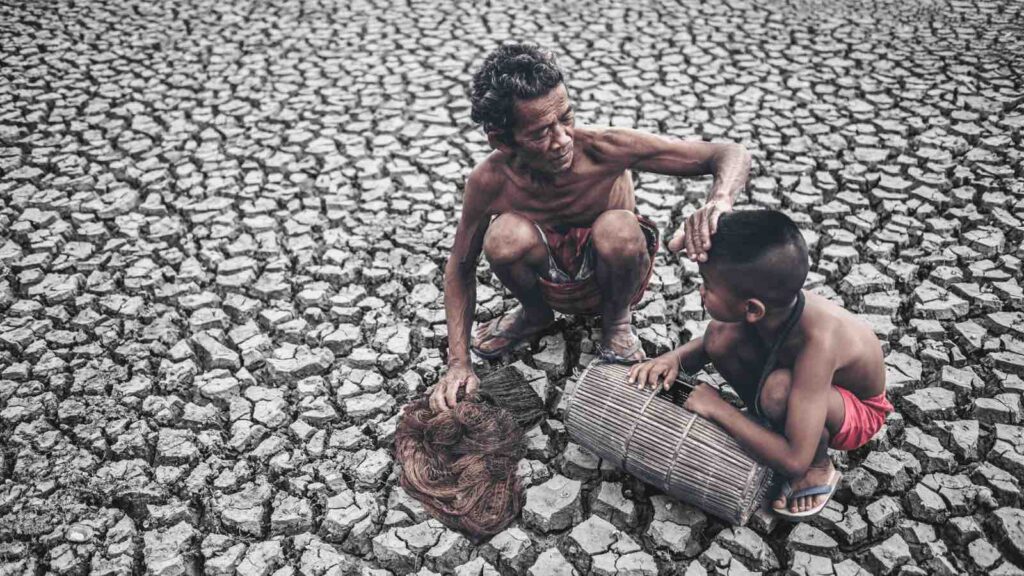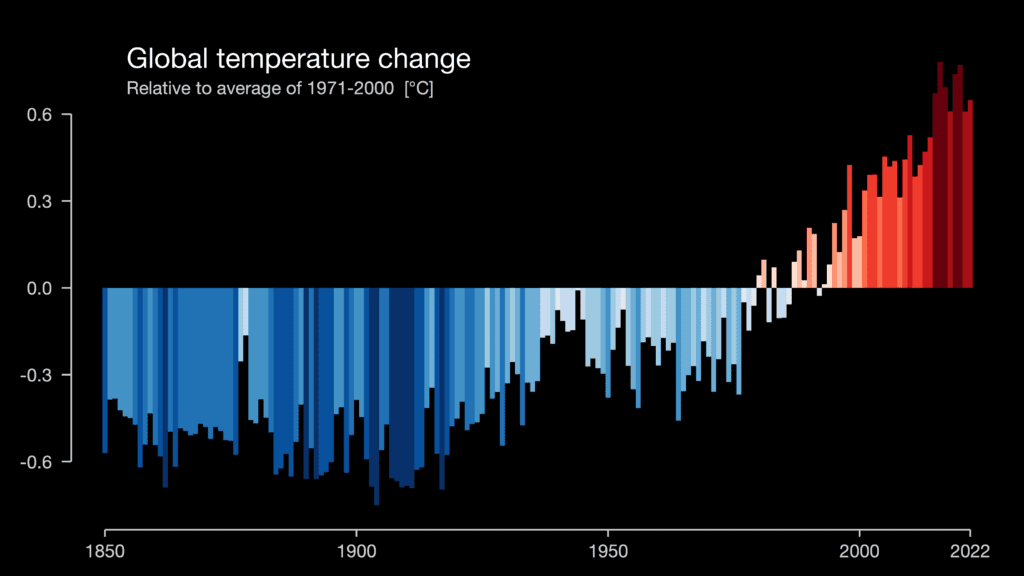To put it bluntly, Millennials and Gen Z, in a world plagued by rampant emissions, would endure 1.8 times and 2 times more warming, respectively, than Baby Boomers.
In a world where climate change continues to intensify, the fate of each new generation hangs in the balance. A recent analysis, employing cutting-edge climate models and various greenhouse gas emission scenarios, has unveiled two contrasting futures. One scenario depicts a world where aggressive emissions cuts are made, aligning with the Paris Agreement’s goal of limiting global warming to 2°C this century. The other paints a bleak picture of a world with unabated emissions, leading to a harrowing rise in temperatures and extreme weather events.
RELEVANT SUSTAINABLE GOALS



About The Climate Stripes
“Warming stripes”, also known as climate stripes, climate timelines, or stripe graphics, serve as compelling data visualization tools that paint a stark picture of long-term temperature trends. Adhering to a minimalist aesthetic, these graphics employ color as the sole communicative tool, eliminating any technical distractions. This design choice makes the underlying message of global warming trends more intuitively understandable, particularly to non-scientists.
The concept behind warming stripes is rooted in the age-old adage, “a picture is worth a thousand words”. This was brought to life by climate scientist Ed Hawkins in 2018, who pioneered the creation of the Climate Stripes. Resembling a barcode, these images transform annual climate data of a location into rows of colored stripes. Each stripe represents a year and its color indicates the temperature and precipitation compared to the long-term average. The visual language is simple, yet profound: red bars for warmer years and blue for cooler ones, paired with green bars for wet years and brown for drier ones. This clear and accessible visual representation conveys the stark reality of climate change effectively.
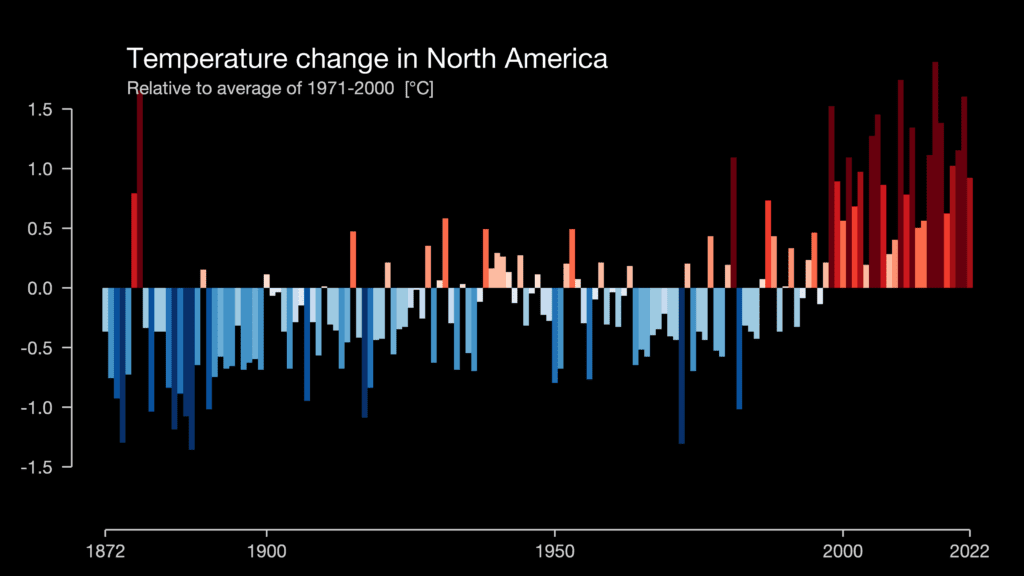
If you scrutinize these minimalist graphics closely, you’ll start to notice intriguing patterns. One such observation is the stark difference in the frequency of red spikes – indicating higher temperatures – between the West and the Global South.
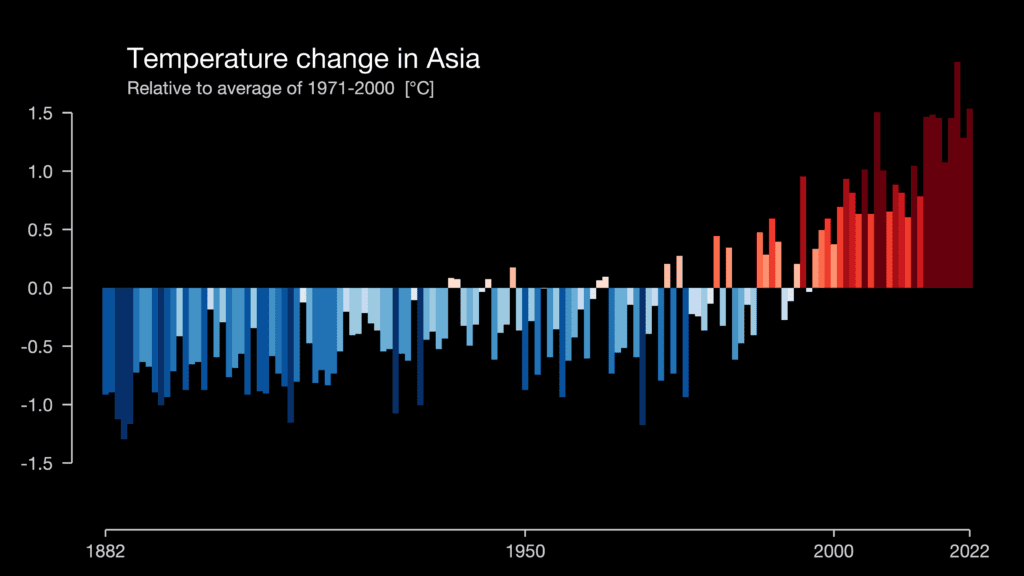
Exploring the Impact of Global Warming and Extreme Weather on Each Generation’s Journey
Looking at the scenario with rapid emissions cuts , the analysis projects a warming trend of 1°C to 2.5°C relative to the 1991-2020 baseline across Asia by 2050. However, this warming stabilizes through 2100. Conversely, in a world where emissions run rampant , the projected warming ranges from a scorching 3°C to a blistering 5°C by the turn of the century. These findings enable us to evaluate the lifetime warming experienced by seven generations, hinging upon the speed at which global heat-trapping emissions are curbed.
When emissions continue unabated, the younger generations (Millennials, Gen Z, and Gen Alpha) face an alarming prospect. In a scenario characterized by high emissions (SSP3-7.0), they could be subjected to a staggering 3.3 to 3.9°C of warming throughout their lifetimes. In stark contrast, the Greatest, Silent, and Baby Boomer generations would experience a comparatively milder 0.7 to 1.9°C of warming over the course of their lives.
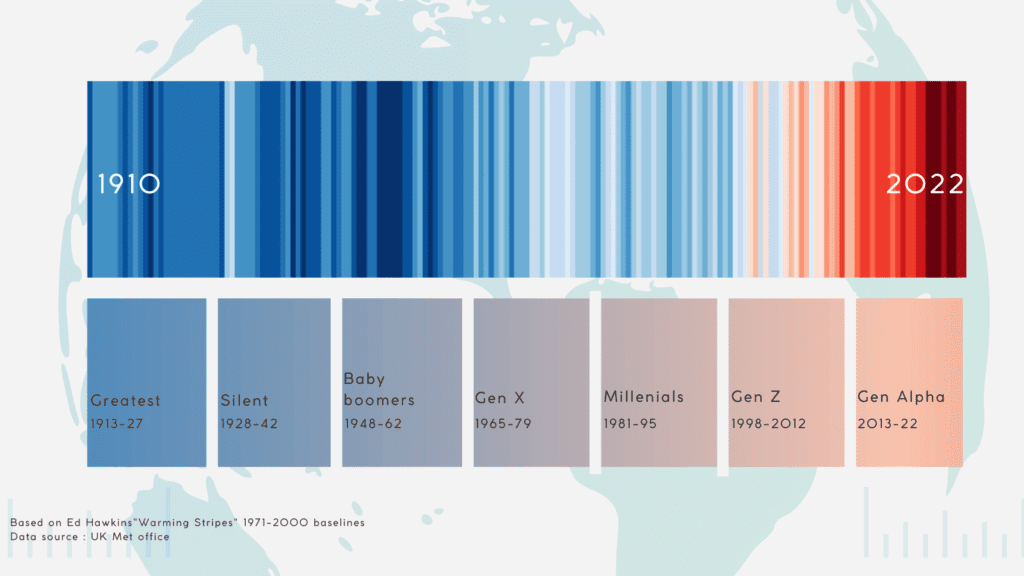
Silent Generation (1928-1945) were born to a world where ‘global warming’ was unheard of, an untouched canvas of nature. Can you imagine the sheer surprise and disbelief they must have felt when climate change first got mentioned?
Baby Boomers (1946-1964) witnessed the dawn of industrialization. Air-conditioners, cars, factories – convenience at the cost of our Earth? The jury was still out.
Generation X (1965-1980) began to taste the consequences. With the first Earth Day in 1970, they became aware. Still, the warming world was mostly a topic for science fiction, not an impending reality.
Millennials (1981-1997), well, we were born into the warming world. The rise in global temperature wasn’t a far-off statistic anymore – it was our reality. Polar bears on thinning ice, severe storms – these became our symbols.
Generation Z (1998-2012) – They never knew a world without climate change. The crisis isn’t coming, it’s here. They’ve seen, heard, and experienced the warning signs. Record-breaking temperatures, extreme weather – it’s the air they breathe.
And now, Generation Alpha (2013-2025), the first generation to potentially live their entire lives in a world fundamentally altered by climate change. Are they doomed to bear the brunt of our mistakes? To put it bluntly, Millennials and Gen Z, in a world plagued by rampant emissions, would endure 1.8 times and 2 times more warming, respectively, than Baby Boomers.
Choosing Our Path: The Crucial Role of Decisions in Shaping Generations’ Climate Fate
However, in the hopeful scenario of rapid emissions cuts, where we manage to keep global warming below 2°C, the younger generations could breathe a slight sigh of relief. They may face between 1.5 to 2.4°C of warming over their lifetimes, while Baby Boomers would endure a 1.9°C increase in temperature throughout their lives.
In this scenario of rapid cuts, Millennials and Gen Z would experience roughly the same amount of warming (1.2 times and 0.9 times, respectively) as Baby Boomers.
But what about Gen X? As members of this generation find themselves firmly in middle age, the analysis reveals a unique predicament. Due to the time required to reduce emissions, the difference in expected warming between the high and low emissions scenarios is less pronounced compared to younger generations. Paradoxically, with aggressive cuts, Gen Xers would likely experience the most total warming over their lifetime.
The future we choose holds immense significance not only for younger generations across the globe but also for the solutions we embrace.


